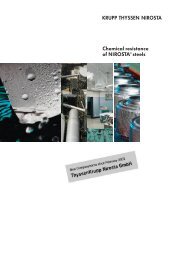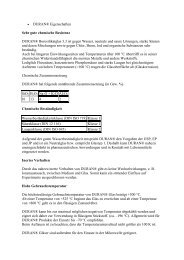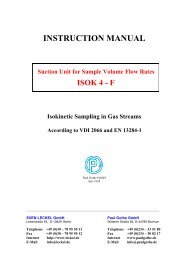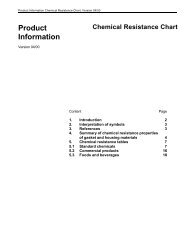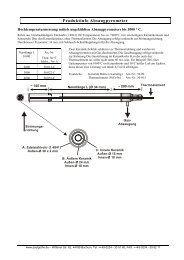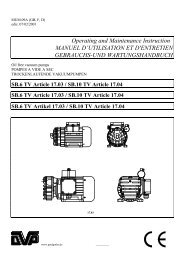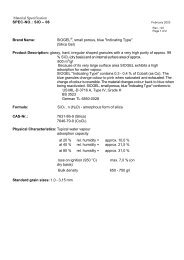Dust-Measurement - Paul Gothe GmbH
Dust-Measurement - Paul Gothe GmbH
Dust-Measurement - Paul Gothe GmbH
Create successful ePaper yourself
Turn your PDF publications into a flip-book with our unique Google optimized e-Paper software.
i<br />
Table C.2 — Values of Ki as a percentage - Tangential method for circular ducts<br />
Ki<br />
nd = 2 nd = 4 nd = 6 nd = 8<br />
1 14,6 6,7 4,4 3,3<br />
2 85,4 25,0 14,6 10,5<br />
3 75,0 29,6 19,4<br />
4 93,3 70,4 32,3<br />
5 85,4 67,7<br />
6 95,6 80,6<br />
7 89,5<br />
8 96,7<br />
Method for rectangular ducts<br />
In the method applicable to rectangular ducts, the sampling plane is divided into equal areas by lines parallel to the sides<br />
of the duct, and a sampling point is located at the centre of each area (see Figure C.3).<br />
In general, both sides of the rectangular duct are divided into an equal number of parts, giving areas which have the same<br />
shape as the duct. The number of partial areas is thus the square of 1, 2, 3, etc. (see Figure C.3 a).<br />
L1 and L2 being the dimensions of a section, where L1/L2 is greater than 2, side L1 shall be divided by a higher number<br />
than L2 so that for each of the partial sections, the ratio l1/l2 (partial section) is less than 2.<br />
If the lengths of the sides of the duct l1 and l2 are divided into n1 and n2 parts respectively, the number of sampling points<br />
is n1 times n2 and the smallest distance from a wall of the duct will be l1/2n1 and l2/2n2.<br />
19



